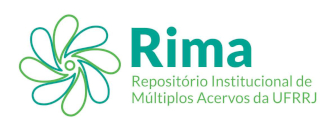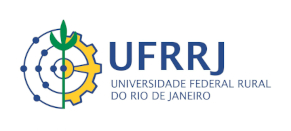Please use this identifier to cite or link to this item:
https://rima.ufrrj.br/jspui/handle/20.500.14407/20380| Tipo do documento: | Tese |
| Title: | Padronização de técnicas moleculares para o estudo da interação Culex sp. e Plasmodium spp. e aspectos ecológicos de culicídeos, capturados no município de Seropédica, Rio de Janeiro |
| Other Titles: | Standardization of molecular techniques for studying the interaction between Culex sp. and Plasmodium spp., and ecological aspects of culicids, captured in the municipality of Seropédica, Rio de Janeiro |
| Authors: | Vilela, Thamyris Sampaio |
| Orientador(a): | Santos, Huarrisson Azevedo |
| Primeiro coorientador: | Massard, Carlos Luiz |
| Primeiro membro da banca: | Santos, Huarrisson Azevedo |
| Segundo membro da banca: | Guedes Junior, Daniel da Silva |
| Terceiro membro da banca: | Souza, Aline Moreira de |
| Quarto membro da banca: | Peixoto, Maristela Peckle |
| Quinto membro da banca: | Silva, Claudia Bezerra da |
| Keywords: | Dípteros;fonte alimentar;malária aviária;PCR Multiplex;Dipterans;feeding sources;avian malaria;Multiplex PCR |
| Área(s) do CNPq: | Medicina Veterinária |
| Idioma: | por |
| Issue Date: | 17-Jun-2019 |
| Publisher: | Universidade Federal Rural do Rio de Janeiro |
| Sigla da instituição: | UFRRJ |
| Departamento: | Instituto de Veterinária |
| Programa: | Programa de Pós-Graduação em Ciências Veterinárias |
| Citation: | VILELA, Thamyris Sampaio. Padronização de técnicas moleculares para o estudo da interação Culex sp. e Plasmodium spp. e aspectos ecológicos de culicídeos, capturados no município de Seropédica, Rio de Janeiro. 2019. 91 f. Tese (Doutor em Ciências Veterinárias) - Instituto de Veterinária, Universidade Federal Rural do Rio de Janeiro, Seropédica, 2019. |
| Abstract: | A malária aviária é uma doença parasitária que apresenta ampla distribuição geográfica. No Brasil, Plasmodium juxtanucleare é a principal espécie causadora dessa patologia em aves da espécie Gallus gallus, em infecções naturais. As aves acometidas apresentam diversos sintomas que variam desde perda de peso até sinais neurológicos, ocasionando prejuízos consideráveis na indústria avícola quando o plantel é acometido. Apesar da interação hospedeiro-parasito apresentar diversos estudos, pouco se sabe sobre a interação parasito- vetor na dinâmica dessa doença, existindo apenas algumas pesquisas experimentais que demostram a capacidade de vetoração de Plasmodium juxtanucleare por algumas espécies do gênero Culex. O objetivo deste estudo foi identificar as espécies de Culex naturalmente infectados por Plasmodium, determinando o potencial de vetoração de algumas espécies, assim como identificar a fonte alimentar destes dípteros pela técnica de PCR multiplex em tempo real, possibilitando uma melhor elucidação sobre a dinâmica parasito-vetor. As espécies de Culicinae, capturadas neste estudo, foram Culex quinquenfasciatus, Culex nigripalpus, Aedes aegypiti, Aedes albopictus, Aedes. albifasciatus, Anopheles aquasalis, sendo o gênero Culex o predominante no local de estudo. A ocorrência da infecção de dípteros por Plasmodium spp. apresentou uma correlação com o hábito alimentar desses insetos em aves, principalmente nos meses de maio, novembro e dezembro, que foram meses considerados quentes, úmidos e chuvosos, propiciando o aumento de Culex sp. na região, reforçando a influência das condições climáticas na ocorrência do vetor e consequentemente sua capacidade de vetoração. A padronização de duas técnicas de PCR multiplex em tempo real, de alta sensibilidade, foi realizada e cada uma delas detectou até três fontes alimentares ao mesmo tempo. Assim, pelas análises de preferência alimentar dos dípteros do gênero Culex, foi possível correlacionar a positividade de infecção para Plasmodium sp. com suas principais fontes de repasto. Dessa forma, foi possível observar uma maior predileção de mosquitos do gênero Culex para fontes de repasto em aves, mesmo com a presença de outras espécies animais disponíveis, evidenciando um caráter ornitofílico. |
| Abstract: | Avian malaria is a parasitic disease with a wide geographical distribution. In Brazil, Plasmodium juxtanucleare is the main species causing this pathology in Gallus gallus birds in natural infections. Affected birds exhibit various symptoms ranging from weight loss to neurological signs, leading to significant losses in the poultry industry when the flock is affected. Despite numerous studies on host-parasite interactions, little is known about the parasite-vector interaction in the dynamics of this disease, with only a few experimental studies demonstrating the vectoring capability of Plasmodium juxtanucleare by some species of the Culex genus. The objective of this study was to identify Culex species naturally infected with Plasmodium, determining the vector potential of some species, as well as identifying the feeding sources of these mosquitoes using real-time multiplex PCR, enabling a better understanding of the parasite-vector dynamics. The Culicinae species captured in this study were Culex quinquenfasciatus, Culex nigripalpus, Aedes aegypti, Aedes albopictus, Aedes albifasciatus, and Anopheles aquasalis, with the Culex genus being predominant in the study area. The occurrence of dipteran infection with Plasmodium spp. showed a correlation with the feeding habits of these insects on birds, especially in the months of May, November, and December, which were considered hot, humid, and rainy months, promoting an increase in Culex sp. in the region, reinforcing the influence of climatic conditions on the occurrence of the vector and consequently its vectoring capacity. The standardization of two highly sensitive real-time multiplex PCR techniques was performed, each of which detected up to three feeding sources at the same time. Thus, by analyzing the feeding preferences of Culex dipterans, it was possible to correlate the positivity of infection with Plasmodium sp. with their main feeding sources. Accordingly, a greater preference for birds as feeding sources was observed in mosquitoes of the Culex genus, even in the presence of other available animal species, highlighting an ornithophilic character. |
| URI: | https://rima.ufrrj.br/jspui/handle/20.500.14407/20380 |
| Appears in Collections: | Doutorado em Ciências Veterinárias |
Se for cadastrado no RIMA, poderá receber informações por email.
Se ainda não tem uma conta, cadastre-se aqui!
Files in This Item:
| File | Description | Size | Format | |
|---|---|---|---|---|
| 2019 - Thamyris Sampaio Vilela.Pdf | 2.17 MB | Adobe PDF |  View/Open |
Items in DSpace are protected by copyright, with all rights reserved, unless otherwise indicated.

